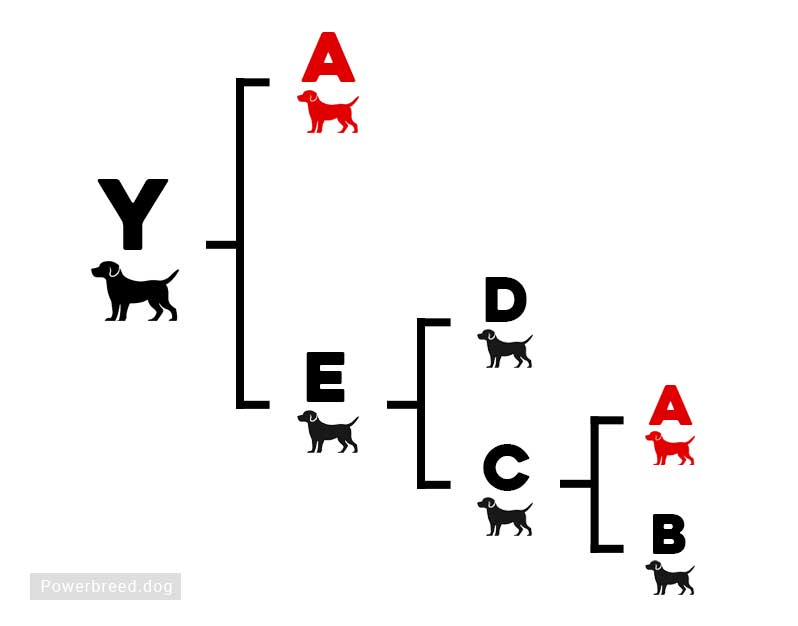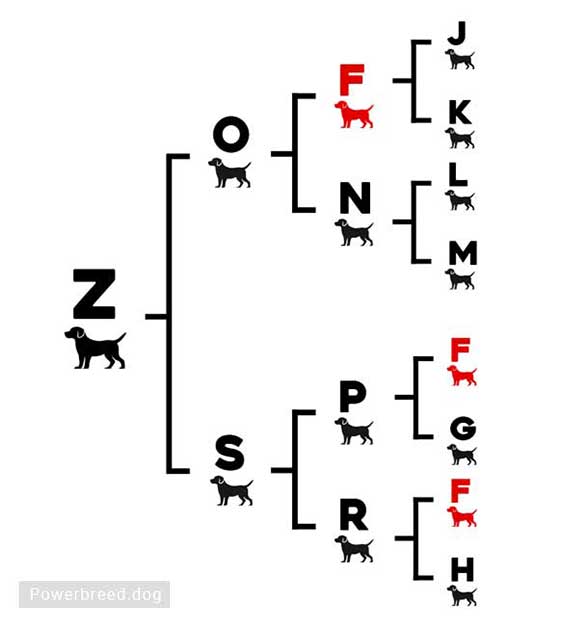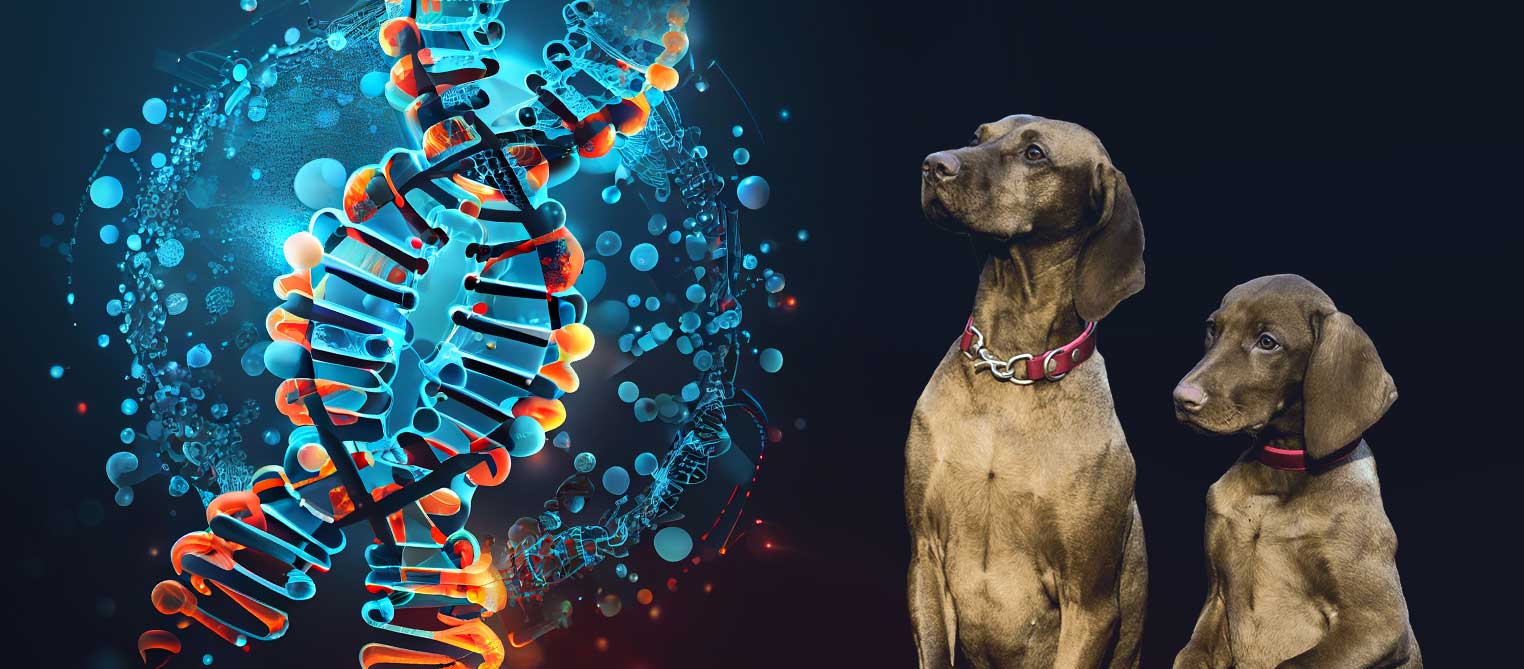For centuries, people have selectively bred dogs to create specific types of dogs for different purposes. This practice has gradually shaped the breeds we know today. Now, we have a significant and continually expanding amount of information that assists in the high-quality selection of diverse dogs in terms of appearance and purpose.
Dog breeding requires specialized knowledge to achieve the desired results. It involves a thorough analysis of generations and genetic material, enabling the prediction of health conditions, nervous system, temperament, mental resilience, behavioral and qualitative characteristics, and conformation with the highest possible accuracy.
“Breeding dogs should be driven by a passion for the breed.”
Nothing less
Let’s talk about some techniques of breeding. There are others, but we’ll start with the basics. Each of them is present in the breeding program of an experienced breeder at a given time, and they can overlap and complement each other.
1. Pure breeding
This is a technique used in dog breeding where two dogs of the same breed are mated to produce offspring with consistent and predictable traits. The goal is to maintain and perpetuate specific qualities, characteristics, and standards associated with that particular breed. The intention of minimizing genetic variability within the breed is present, as well. Purebreeding involves selecting dogs that conform closely to the established breed standards in terms of appearance, behavior, and genetic traits.
Therefore, this involves a serious and thorough analysis of the pedigrees of the two dogs to determine their purity and assess whether they are ideal for breeding. The goal of true breeding is to mix two bloodlines with excellent qualities to produce puppies that closely approach the ideal standards of the breed. Therefore, both the female and the male dog must meet such requirements.
While pure breeding maintains the integrity of a breed, breeders need to be mindful of potential health issues associated with a limited gene pool. Over time, some purebred dogs may be more susceptible to genetic disorders due to a lack of genetic diversity. Responsible breeding practices include health screenings, genetic testing, and ethical treatment of animals to ensure the overall well-being of the breed.
2. Inbreeding
It refers to the mating of closely related individuals within the same breed – brother and sister, grandson and grandmother, cousins, etc. Genetically, this practice increases the likelihood of offspring inheriting identical alleles from both parents, potentially leading to a higher expression of both desirable and undesirable traits.
While it can help to fix certain characteristics, it also raises the risk of amplifying genetic defects or predispositions, resulting in potential health issues within the breed. Responsible breeders aim to strike a balance to maintain breed standards while minimizing the negative impacts of inbreeding.
While inbreeding in dogs is generally discouraged due to the increased risks, there are some situations where this technique might be considered. When it is reasonably needed, limited, and strictly controlled it might lead to some benefits:
- it might reinforce and stabilize specific desirable traits within a breed, helping to maintain the breed's unique characteristics and standards
- it can lead to a more consistent appearance and temperament within a breed, making it easier for breeders to predict the traits that will be passed on to the offspring
- in certain cases, it might be used to establish and maintain particular breeding lines with distinct qualities, allowing breeders to create a lineage with specific traits
- Genetic Disorders: Increased likelihood of inherited genetic disorders and health issues, as the probability of offspring inheriting identical alleles from both parents is higher
- Long-Term Health Problems: Continuous inbreeding can result in a cumulative effect of health problems, leading to chronic issues that persist across generations
- Reduced Genetic Diversity: Inbreeding decreases genetic diversity within a population, making the gene pool more limited. This reduction in diversity can increase the risk of genetic defects and compromise the overall resilience of the breed
- Weakened Immune System: Reduced genetic diversity may result in weakened immune systems in inbred dogs, making them more vulnerable to infections and diseases
- Increased Expression of Undesirable Traits: Inbreeding can amplify the expression of undesirable traits, including physical and behavioral abnormalities, as well as susceptibility to certain diseases
- Reproductive Issues: Inbreeding can lead to reproductive issues, such as decreased fertility, smaller litter sizes, and increased rates of stillbirths or early puppy mortality
- Loss of Desired Traits: While inbreeding may initially reinforce specific desirable traits, over time, it can lead to a loss of vigor and the exaggeration of negative traits, diminishing the overall quality of the breed
- Limited Adaptability: Inbreeding reduces a breed's ability to adapt to changing environmental conditions, potentially making them more susceptible to new diseases or challenges
3. Linebreeding
It is a technique within the inbreeding, distinguished by its goal to preserve the finest genes in a bloodline while ensuring adequate genetic diversity. This is accomplished by selecting animals as parents that are close relatives of specific ancestors but are loosely connected or nearly unrelated to each other. The approach primarily relies on ancestry.

Figure 1. Linebreeding

Figure 2. Linebreeding
Compared to other forms of inbreeding, linebreeding is way more complicated, yet it is frequently the preferred choice among reputable professionals.
Greater genetic diversity helps reduce the frequency of common genetic mutations and health issues associated with close breeding. Nevertheless, there is still a risk of homozygosity, which fixes undesirable genes.
4. Backbreeding
Backbreeding, also known as reverse breeding or backcrossing, is a technique used to reintroduce desirable traits from a particular ancestor or breed back into a breeding line. The goal is to emphasize or strengthen specific characteristics that may have been diluted or lost over generations.
A common example of backbreeding involves pairing a dog from the current generation that possesses the desirable traits with another partner. Then mate the same dog with the highest-quality puppy from the litter. The process might be repeated, breeding the original stud with the strongest specimen from the second-generation litter.
The resulting offspring is supposed to have a genetic makeup that includes the traits of the distant ancestor, reinforcing the characteristics the breeder is seeking while maintaining some genetic diversity.
However, minding the fact that backbreeding is a form of close inbreeding, breeders need to be extremely cautious and knowledgeable about the genetics involved in backbreeding to avoid potential health issues associated with inbreeding and to achieve the desired goals without compromising the overall well-being of the dogs.
Careful observation and in-depth analysis are required with the help of DNA tests and regular health checks. A viable option is to use backbreeding for the first generation, and then transition to linebreeding to reduce the risks.
5. Outcrossing
It refers to the mating of dogs that are not closely related or have no common ancestors for several generations. The goal of outcrossing is to introduce genetic diversity into a breeding program, potentially improving overall health, and vigor, and reducing the risk of inherited disorders. By bringing in genetic material from unrelated individuals or different bloodlines, breeders aim to broaden the gene pool and minimize the chances of genetic issues associated with inbreeding. This is a popular method for reducing levels of inbreeding and even nullifying them.
When is outcrossing advisable or recommended?
- When the breeder wants to introduce a characteristic that is lacking in the line
- When potential drawbacks caused by homozygous recessive genes need to be limited
- When inbreeding depression is observed in the breeding program. In this case, it becomes necessary, not just recommended
The pair of dogs should be carefully chosen with proven compatibility. An analysis of the ancestors’ characteristics from both sides is a necessity, and the breeding pair should not share common ancestors within the last 4 generations. Any genetic burden or health issue must be given special attention.
In some cases, outcrossing is used as an addition to linebreeding to achieve optimal results.
6. Crossbreeding
Crossbreeding in dog breeding refers to the mating of dogs from different breeds or breed types. The purpose of crossbreeding is to combine the desirable traits of two distinct breeds to create a new hybrid or crossbred dog. Crossbreeding can result in offspring that exhibit a mix of characteristics from both parent breeds.
Dog breeders engage in crossbreeding for various reasons, such as enhancing certain qualities, introducing new traits, or creating dogs with specific purposes or abilities. Crossbred dogs may possess a combination of physical features, temperaments, and behaviors from each parent breed.
It is used for the creation of new breeds. Some of the popular “designer breeds” nowadays are a result of crossbreeding.
It can also play a role in saving a dog breed by introducing genetic diversity and addressing specific health or behavioral issues within the breed. While maintaining the purity of a breed is essential for preserving its unique characteristics, some breeds may face challenges such as a limited gene pool, increased susceptibility to inherited disorders, or declining overall vitality.
It’s crucial, however, to approach crossbreeding with careful planning and responsibility. Breeders must have a deep understanding of the characteristics, health histories, and temperaments of the parent breeds involved. The goal is to create crossbred dogs that embody the positive traits of both breeds while maintaining the overall well-being and standard of the original breed. Responsible breeding practices, genetic testing, and a commitment to the welfare of the dogs are essential components of successful and ethical crossbreeding for the preservation of a dog breed.



